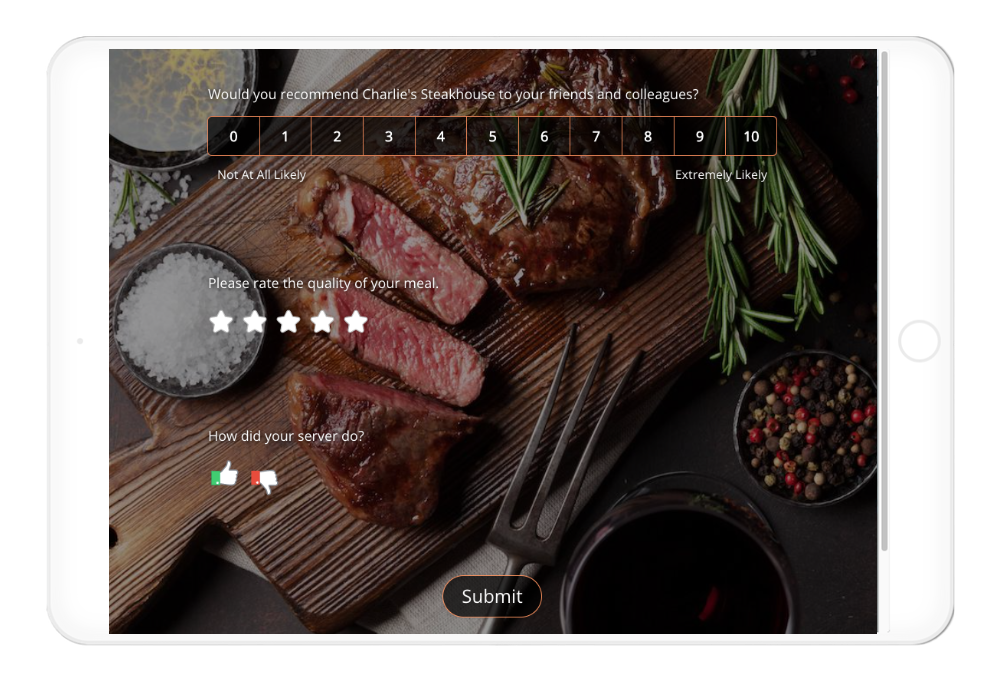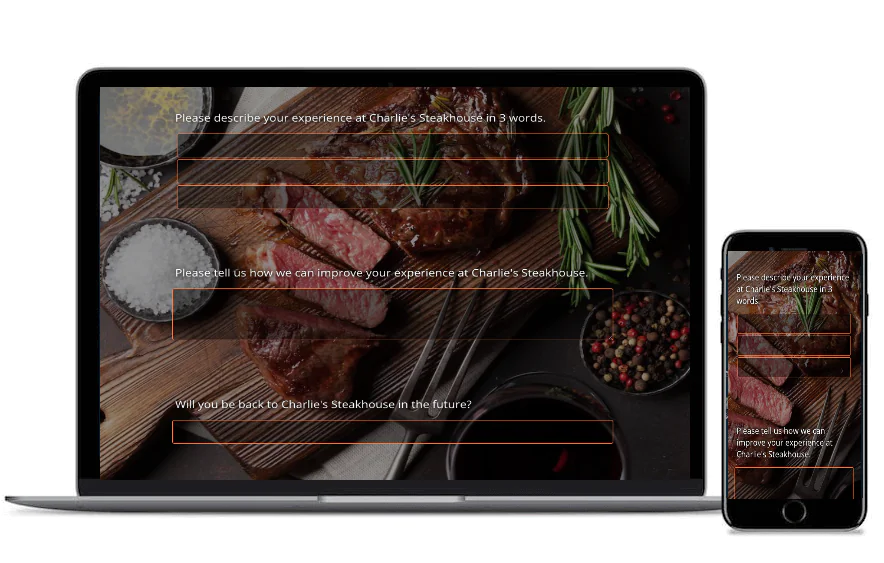How are you doing? What are you feeling? When are we leaving? You probably ask things like these quite often, and all three have something in common: Each is an example of an open-ended question. This means, rather than providing a set of potential responses, the question remains open, allowing someone to answer however they’d like. In this blog, we’ll look closer at surveys using these type of questions, when to use them, and the pros and cons of using them.
Create your survey, form, poll, or questionnaire now!
What is an Open-Ended Question?
A question that is open allows people to respond freely without having to select an answer from a list of options. The purpose of using them on surveys is to probe deeper into a participant’s thoughts and feelings, rather than limiting them to set choices.
Open-Ended Questions vs. Close-Ended Questions
Whereas an open-ended question is broad and can be answered in detail (e.g., “What did you think about your experience?”), closed ones are narrow in focus. They are usually answered with a single word or selected from limited multiple-choice options (e.g. “How was your experience? → Great/Good/Average/Bad/Terrible).
In a nutshell, one allows people to answer however they want, whereas the other provides answer options.
Are Open-Ended Questions Qualitative or Quantitative?
Open-ended questions are a key part of qualitative research. Whereas quantitative research looks to put quantifiable amounts or numbers to responses using closed questions, qualitative research with open answers looks to understand the “why” behind the numbers. So while a quantitative question on a survey may ask someone to rate their experience on a scale of 1-5, a qualitative question would then ask them why they selected that particular number.
The three most common qualitative methods include:
- Interviews: Verbally asking open-ended questions to people.
- Focus groups: Hosting a discussion amongst a group of people.
- Surveys: Asking open-ended questions to a sampling of the population or a target audience.
The graphic below provides a handy guide to quantitative vs qualitative research, otherwise known as close-ended questions vs open-ended questions.

Open-Ended Questions vs Close-Ended Questions
When you’re creating a survey, it’s important to decide whether to use open-ended questions versus closed-ended questions to get specific information. You may also choose to use a combination of questions to collect more robust feedback, as each type of survey question has strengths and weaknesses (which we’ll cover later).
For now, here is an example of open-ended questions and close-ended questions, each seeking similar (but different) information about a mobile phone.
OPEN: Are you happy with our product?
CLOSED: Are you happy with our product?
- Yes
- No
OPEN: Why did you choose our product?
CLOSED: Why did you choose our product?
- Great product
- Good reviews
- Right price
- Great customer service
OPEN: How could we improve our product?
CLOSED: How could we improve our product?
- Lower price
- More features
- Better customer service
- More user-friendly
Pros & Cons of Using Open-Ended Questions
What are the advantages and disadvantages of using open-ended questions? We take a look at both below!
Pro:
Open-ended questions allow respondents to answer freely with whatever is readily available in their minds, whereas close-ended questions force people to focus their attention on specific responses chosen by the researcher. This could impact their answers and lead to survey bias.
Con:
Giving respondents the freedom to answer any way they choose could result in answers that don’t benefit the purpose of the study. Certain questions that survey asks may not be properly answered.
Pro:
Open-ended questions allow researchers to learn more than they may anticipate; survey participants may provide answers that were not expected, and not available through set multiple-choice questions.
Con:
Open-ended questions require more time from participants, and some people may not be willing to take the time to write out answers vs simply checking a box (unwillingness to engage in long surveys has even led to micro surveys that would never include open-ended questions). So while open-ended questions may provide great feedback, it can be harder to get.
Pro:
Open-ended questions provide richer data than simple yes/no or multiple choice answers. If you survey 100 people, it’s not always helpful to know that 60% said “yes”. You don’t know why they said yes. It can be helpful to know why 40% said “no” by leaving things open. That way, respondents can provide feedback that you can then act upon.
Con:
Qualitative surveys using open-ended questions are more difficult to analyze and take longer to review. Answers may need to be put into buckets, and investigated, whereas close-ended questions are cut-and-dried.
Pro:
There are no limits on open-ended questions (except, perhaps, word count limits which is up to the survey taker to determine). Open-ended questions give respondents the liberty to include details about feelings, attitudes, and views that are typically not available on surveys with close-ended questions. Sometimes, respondents may even bring up ideas or suggestions you’ve never thought of, leading to positive changes.
Con:
Open-ended surveys can provide too much freedom; if you’re looking for specific answers to specific questions, you may not want the bother or weeding through lengthy answers that are unrelated to your true surveying motivation.
Open-ended Query Considerations
It’s important to understand that the type of question used on a survey can change outcomes. For example, in a study conducted by Pew Research, respondents were asked, “What mattered most to you while deciding how you voted for president?”
One group was surveyed in a close format while the other group was asked in an open format. The results are highlighted below:

As you can see, the close-ended question resulted in 58% of respondents choosing “The economy”. The open-ended format resulted in only 35% citing the economy. And all following answers had some disparity, as well. It’s possible that by providing answers through a closed format led people to choose specific answers, while those who had carte blanche were able to think for themselves and respond in a way more indicative of their true feelings, or simply nothing in particular came to mind.
Learn more about open- and close-ended questions in our blog.
Survey Question Examples
To see an open-ended question on surveys in action, it helps to compare it to a close-ended question. Here’s a look at both!
Open-ended Survey Example
In this example, respondents answer with single words and can provide longer, more thoughtful answers in the bigger text boxes.

Close-ended Survey Example
In this example, three methods of asking closed-ended questions are used: NPS, Stars, and Thumbs. Check out more examples of each type of SurveyLegend survey in our blog 10 Different Types of Survey Methods + Pros & Cons.

What Are Some Good Open Survey Questions?
This can vary greatly depending on what information is attempting to be gathered. One for a job interview, for example, will be very different from one regarding a product or service.
Some to consider based on survey needs:
- Interview: What interests you about our company?
- Product: What could we do to improve our product?
- Service: Tell us what you liked (or did not like) about our service.
- Education: What do you think about virtual learning?
- Healthcare: Does COVID make you hesitate to perform your job?
Conclusion
Hopefully, deciding which type of survey is right for you has been made easier with the information presented here. Of course, there’s no reason to not consider a survey with both open-ended and closed-ended questions, since both are valuable. SurveyLegend lets you do both! While open-ended survey question analysis can be difficult, they can provide a wealth of information and even lead to information that wasn’t expected (leading to improvements for the betterment of the company).
With SurveyLegend, you can use our online surveys to ask questions in any format, getting the best of both worlds! Check out this streaming service survey below with combination of open and closed queries!

Like what you see? SurveyLegend is free and easy to use. Get started today!
What types of questions do you use on surveys? Do you find quantitative or qualitative questions to provide the best data – or a combination of the two? Let us know your thoughts in the comments!
Create your survey, form, poll, or questionnaire now!
Frequently Asked Questions (FAQs)
This type of question allows people to respond freely without having to select an answer from a list of options.
A close-ended question asks for an opinion, and provides a series answers ranging from yes/no to multiple choice.
A qualitative survey asks open-ended questions. Responses are not looked at numerically, and they are instead valued for openness and honesty.



